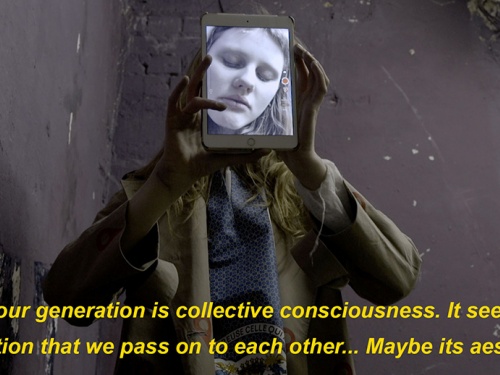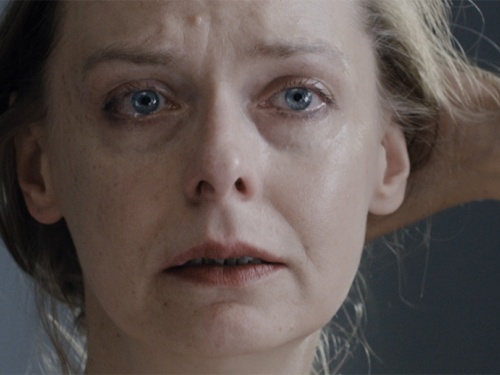Safar: Watch Out for Zouzou
Just like today's pressures on young men and women in the Middle East to conform to an acceptable Muslim lifestyle, there were similar social pressures in the 1970s for what some would say represents the polar opposite - towards secularism and liberalism. Those who didn’t agree with the compulsion to become modern and areligious were deemed out of the step with the times, feudal in outlook, excessively conservative, unimaginative and simply not progressive.
Interestingly the film Watch out for Zouzou (Khalli balak min Zouzou), despite its musical and dance sequences, captures these social tensions and divisions. Viewed through the prism of the intervening four decades, it offers an additional layer of nuance: a captured moment in time when Egypt was a different place, when the radicals of the day were secular modernisers rather than those who wish to return the nation to the presumed halcyon days of a distant Islamic past.
In her most popular role, Soad Hosni (1943– 2001) plays Zouzou, a fun-loving, vivacious student on the Cairo University campus. After winning a big athletics competition, she exchanges banter with student journalists while taking a shower. She is voted “Ideal Student” by her classmates, despite the fact that she is hiding a big secret from everyone. Her mother, a retired belly-dancer, has a troupe, which dances and sings at baladi (village) weddings, and her charming daughter is the star attraction.
Watch Out thus works on multiple levels. It is a snapshot of hopeful, if tempestuous times; an exposé of social prejudice; yet also a popular and light-hearted personal evocation of youthful amorous passions. Zouzou falls in love with her professor Said Kamel (Hussein Fahmy) who represents secular modernity, not only through his directing of theatre and free and easy demeanour, but also with his sports car. Increasingly the pressure to keep her family’s profession hidden intensifies. Sometimes Zouzou remains in the shadows, studying the professor, trying to figure out the best way to approach him. Learning how to make an impression and win the heart of a puzzling twentieth-century man can be a fraught emotional experience in the world of Egypt’s counterpoint to Bollywood.
However, once the professor scorns his fiancée for Zouzou, a cruel plan is contrived. At a wedding party that all the characters attend, traditional forms of entertainment – belly-dancing and Arab singing – are subverted by the twist and western guitar. Witnessing the humiliation of her mother and the troupe, Zouzou comes to their rescue and she starts belly-dancing beautifully, in a sad bittersweet way. She knows it is a performance that will undo her. She is no longer contemporary and worldly; she is a traditional young woman with a murky and economically inferior background who will be scorned by her new friends – thus revealing societal hypocrisy, as conservatism and progression are both unveiled as denying the authenticity of real folk culture. Far more devastatingly, she represents a throwback to a past the rest of the country would prefer to forget as it races forward.
It is also a performance that will have repercussions. After flyers of Zouzou dancing appear around campus, she ends up making an impassioned speech, saying that her only fault lies in the fact that she is the daughter of a belly dancer. Suddenly Zouzou is elevated from a lovable nymph, desperate to “fit in”, to a Cassandra, decrying the duplicity of society generally. Cinematically, this concluding scene transports an ostensibly fun and flippant film into a powerful social mirror, worthy of the most challenging of “art movies”. Its message obviously resounded with local audiences. In 1972, Watch Out was the biggest box office hit to date in Egyptian cinema.
A very public life
Soad Hosni was a major star of Arab cinema. The tenth daughter in a family with seventeen children, she had her big break at three years old when she sang “Okht al Qamar” [Sister of the Moon] on the children’s radio programme Baba Sharo. Her father, a calligrapher, was the Joe Jackson of his day, and managed a family group of child singers and performers. Soad’s sister, Nagat El-Saghira, also became a singing sensation when she was ten in the 1940s. Her brother, Ezz Eddin Hosni, would later become a music composer. However, show business put strains on family life, and Soad’s parents divorced. She had already stopped singing as a child and she lived briefly with first her sister Nagat and then her mother once she remarried.
At fifteen Soad was discovered by the director and scriptwriter Abdel-Rahman El Khamis who wanted her to try out for the part of Ophelia in his theatre production of Hamlet. Instead she auditioned for a film he was writing, and Hassan wa Na'ima was released in 1959. Over the next three years Soad made ten more films. By the 1990s, she appeared in a record number of 83 movies. When she was young, Soad was “the Cinderella of Arab Cinema”, but once she matured and her image was increasingly featured on the lurid pulp fiction movie posters plastered all over Cairene streets, she had become its Marilyn Monroe. More than likely, she suffered like Marilyn emotionally and professionally. Married and divorced several times, she was more than a singer and dancer, and acted in serious dramatic roles in several adaptations of Naguib Mahfouz novels. Her final appearance was in 1991 in the film The Shepherd and the Woman directed by her ex-husband, Ali Badrakhan.
Her life was writ large on the silver screen. It was an iconic status that cast a glittering shadow over the region’s female artists, writers and filmmakers. Egyptian critic Mona Anis quotes Walter Benjamin in her remembrance of the actress for Al-Ahram Weekly Online:
“The feeling of strangeness that overcomes the actor before the camera is basically of the same kind as the estrangement felt before one’s own image in the mirror. But now the reflected image has become separable, transportable. And where is it transported? Before the public.”
Seeking a way to illustrate this enigma, the Lebanese video artist and filmmaker Rania Stephan created the documentary The Three Disappearances of Soad Hosni. It was a decade in the making. Stephan explained her obsession to an audience at Manchester’s Cornerhouse. Soad Hosni, she said, “lived on the cinema screen, she married in the cinema, and she died cinematically.”
After a prolonged illness, one of Egypt’s favourite stars fell from a sixth floor London flat to her death in 2001 – a mysterious end that has sparked endless speculation about suicide and conspiracy. What remains is a collected oeuvre of varied films, of which Watch Out For Zouzou remains the best loved and also, perhaps, the most thought-provoking.
Malu Halasa is the Writer in Residence for Safar: A Journey though Popular Arab Cinema, a season of classic and contemporary Arab cinema at the ICA from 21 – 27 September 2012.
Watch Out For Zouzou is screening on Saturday 22 September at 6.15 with an introduction by co-star Hussein Fahmy.
This article is posted in: Blog, Film
Tagged with: articles, Cinema, Film Festival, Guest blogger, Safar, writing




